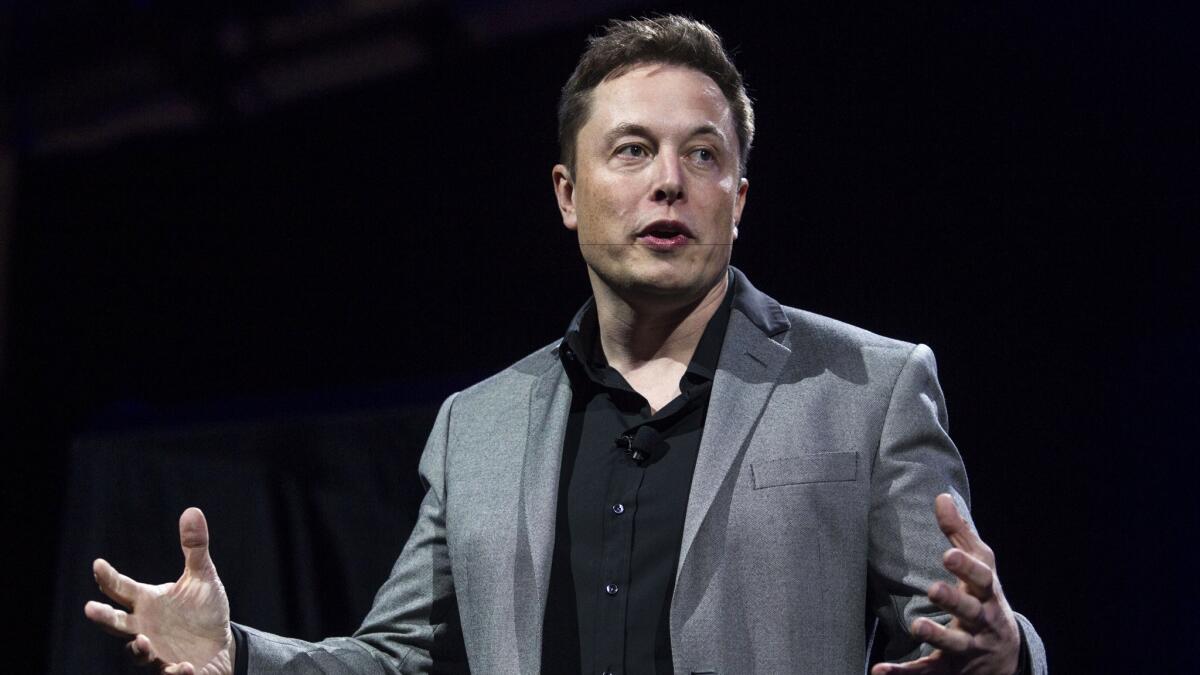SpaceX’s Elon Musk is set to announce plans for colonizing Mars

As if he doesn’t have enough on his plate with solving the mystery of an exploding rocket and tweaking Tesla’s driver-assistance software, SpaceX Chief Executive Elon Musk will discuss plans for colonizing Mars at a space conference in Mexico on Tuesday.
In a highly-anticipated speech titled “Making Humans a Multiplanetary Species” at the International Astronautical Congress in Guadalajara, Musk is expected to, among other things, describe the large rocket that will one day take humans to Mars.
Once called the Mars Colonial Transporter, Musk tweeted earlier this month that the rocket “can go well beyond Mars, so will need a new name.” On Twitter, he’s recently referred to it as the interplanetary transport system.
On Sunday night, Musk teased more details of the rocket, tweeting that SpaceX “achieved first firing of the Raptor interplanetary transport engine.” The Raptor engine is powered by methane and liquid oxygen, and will have a thrust of about 310 metric tons. Musk tweeted that he would provide more details about the engine Tuesday.
Analysts said Musk’s speech is a reaffirmation of the company’s long-term plans.
“Everything he’s doing, at least in his mind, is a step in that direction,” said Bill Ostrove, aerospace and defense analyst for market research firm Forecast International. “Everything is geared toward that ultimate goal of establishing these colonies on Mars.”
In April, Hawthorne-based SpaceX said it was planning to send an unmanned Dragon spacecraft to Mars as early as 2018. NASA has agreed to provide technical support to SpaceX for that mission, such as help with data transmission from deep space, in exchange for entry, descent and landing data.
Musk has said that if all goes according to plan, SpaceX could send people to the Red Planet in 2024, with arrival in 2025.
NASA has said its robotics missions to Mars usually take about eight months to get to the Red Planet, though it was looking at ways to decrease that timeframe for human missions.
Industry experts have questioned whether SpaceX’s Mars mission could become a public-private partnership. NASA is developing the Space Launch System, a heavy-lift launch vehicle that could take missions to an asteroid or to Mars.
The agency expects to launch SLS and its Orion crew capsule on an unmanned test flight in 2018, with a potential crewed flight to an asteroid in the mid-2020s and a Mars mission by the 2030s.
“There’s a lot of practical synergies,” said Greg Autry, assistant professor of clinical entrepreneurship at USC. “It makes sense that the government and SpaceX team up rather than compete.”
Times staff writer James F. Peltz contributed to this report.
For more business news, follow me @smasunaga
More to Read
Inside the business of entertainment
The Wide Shot brings you news, analysis and insights on everything from streaming wars to production — and what it all means for the future.
You may occasionally receive promotional content from the Los Angeles Times.











